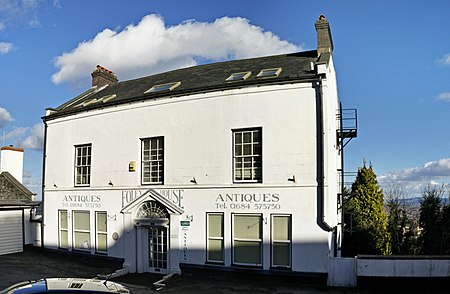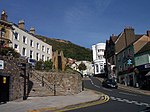Foley House, Malvern
Buildings and structures in Malvern, WorcestershireGrade II listed buildings in WorcestershireGrade II listed housesHouses in WorcestershireTheatres in Worcestershire ... and 2 more
United Kingdom building and structure stubsUse British English from September 2019

Foley House is a Grade II listed building at 28 Worcester Road, Malvern, Worcestershire, England.The two-storey house was created in the early to mid nineteenth century. It has rendered walls and a slate roof. A blue plaque on the house commemorates the fact that from 1936 to 1946 it was occupied by Waldo and Muriel Lanchester and their Lanchester Marionettes theatre company.The building was given "Grade II listed" protection in November 1949. It was as recently as 2015 an antiques centre, however is currently vacant.
Excerpt from the Wikipedia article Foley House, Malvern (License: CC BY-SA 3.0, Authors, Images).Foley House, Malvern
Worcester Road, Malvern Hills Great Malvern
Geographical coordinates (GPS) Address External links Nearby Places Show on map
Geographical coordinates (GPS)
| Latitude | Longitude |
|---|---|
| N 52.1131 ° | E -2.3298 ° |
Address
Foley House
Worcester Road 28
WR14 4QY Malvern Hills, Great Malvern
England, United Kingdom
Open on Google Maps










